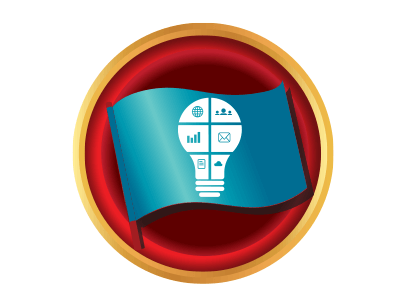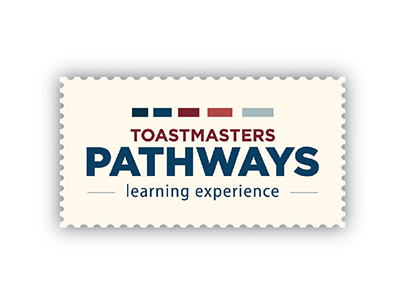
Successful leaders adapt their style to fit the groups they lead or the issues they face. If you lead teams or defuse conflict on a regular basis, or want to improve your ability to do so, the Dynamic Leadership path in the Pathways learning experience can help you hone your leadership skills and ability to handle change.
Like the other paths in the Pathways program, Dynamic Leadership develops public-speaking and leadership skills throughout the five levels of increasingly complex assignments. The first set of required projects focuses on writing and delivering speeches as well as understanding personal communication and leadership styles.
From levels 3 to 5, participants are encouraged to use these skills as they begin to develop new abilities, such as understanding when to use certain negotiation styles and how to develop and oversee a plan for managing change.
When you reach the end of the path, you incorporate the strategies you have learned into a leadership project where you lead a group for six months.
Leading in Challenging Situations
One of the focuses of the path is adapting leadership skills to fluid groups or situations, which can be a difficult skill to master. Shyam Varan Nath of Pleasanton, California, who works as director of enterprise cloud architecture for Oracle, says he chose Dynamic Leadership to improve his ability to lead groups in a fast-paced and diverse work environment.
“When we work with our partners or customers, we often have to lead in situations where we don’t have positional authority,” Nath says. “You have to dynamically adapt your leadership skills according to the situation.”
Change management is an important leadership skill, and one that is practiced in the “Manage Change” project at Level 4. Dealing with transition is always a challenge, whether it’s an individual or an organization facing change; it’s important to plan and to develop ideas for overcoming obstacles that transitions can bring. In “Manage Change,” participants learn how to anticipate change, develop a communication plan and identify roadblocks to achieving their goals.
While completing this project, Nath served as the president of a technology user group tasked with planning an annual event. On the way to the event, unexpected venue renovations posed scheduling and branding issues, requiring quick thinking and decisions. “Imagine the Toastmasters International Convention not being held in August and being called something else,” he says. “It was a change of that magnitude.”
Nath says he was able to leverage this real-world change management experience to complete the project assignment and share what he learned in a speech to his club.
Ana Rezende, DTM, a certified project manager from Doral, Florida, also found the “Manage Change” project beneficial to expanding her professional life. Like Nath, she used a timely work event as the basis for her assignment.
Even after completing the project, Rezende continues to reap its benefits. She says she incorporated aspects of the project’s Communication Plan resource into an existing work document, making it helpful for her and desirable for her colleagues. “It’s my new go-to template. I had groups from other initiatives I’m involved in asking to use it as their checklist for other communication needs.”
Learning Through Feedback and Reflection
Path projects often require feedback from others to improve your leadership abilities. For example, the Level 5 project, “Lead in Any Situation”—in which you take on a leadership role of any kind, inside or outside of Toastmasters—includes a 360-degree evaluation resource. This means you receive feedback from every direction, such as a peer or someone in a subordinate or a supervisory role. Such a process helps you determine successes and areas for growth.
Rezende met with her peers at work to glean even more from their evaluations of her leadership. She says this not only encouraged more thoughtful feedback but also gave her colleagues a chance to practice their communication skills. “This set of responses was so rich!” she says. “Both for things I could improve on and things that were particularly well received but I had not seen as successful.”
Nath, who served as the social media chair for District 57 as his leadership project, received feedback from Toastmasters he worked closest with, including the district director, area and division directors, and members of the district public relations committee.
“The whole idea of social media is that it’s effective only if people observe it,” he says. “It was good to get others’ perspectives on what stuck in their minds and what didn’t—so I could change what I do in the future.”
While some members experience the convenience of work or community events that coincide with projects on the path, you often have the option to reflect on past or future leadership opportunities as you complete your assignments. Roxienne Albertina, DTM, of Kibrahacha Toastmasters club in Curacao, did just that for her Level 3 project, “Negotiate the Best Outcome.”
The project focuses on identifying negotiation styles, and finding and building common ground. It reviews different strategies for reaching an optimal negotiation and includes a video activity that demonstrates these strategies and allows you to test your knowledge.
Albertina says, after reading the project, she thought back to a negotiation and reflected on the strategies she used. “Neither party wanted to surrender to accomplish a win-win situation,” she says. “As the person who was in charge of the negotiation, I had to sadly understand that the only outcome was to walk away.”
Enhancing Learning hrough Electives
Pathways lets you tailor your learning experience to your goals and interests. When completing levels 3 through 5, you choose a minimum of three elective projects to enhance learning and diversify your expertise.
For example, you may decide to improve your one-on-one communication and leadership skills. After completing the required Level 2 project “Introduction to Toastmasters Mentoring,” you can embark on the optional Pathways Mentor Program, which includes three projects and culminates in a six-month mentorship. When you complete this program as well as one full path, you receive the Pathways Mentor designation.
Nath says the introductory mentoring project not only provided him with valuable information on how to be a successful mentor, but that it also encouraged a more formal mentor program within his club. “Now members doing their mentoring project make it more visible and it’s easier to manage the mentor program at the club level.”
Antoinette Brittenum, DTM, of Blue Nile Toastmasters in Memphis, Tennessee, says she used her “High Performance Leadership” project—a Level 5 elective—to benefit her district. The aim was to boost member participation and training in an effort to receive Smedley Distinguished status, a new level of Distinguished recognition implemented last year. As for learning from her leadership decisions, Brittenum says she found value in multiple lessons learned during meetings.
“After each club, area and division event, an evaluation meeting was held to identify challenges, barriers and concerns that hindered our goals.”
She says the Dynamic Leadership path, with its required projects and many electives, has helped her to more patiently and actively listen to her team and family members, strategically plan ahead and communicate her thoughts with clarity.
Shaelyn Berg worked on the Pathways development team at Toastmasters World Headquarters and is now a freelance writer and editor.



 Previous
Previous
 Previous Article
Previous Article

